Rig making is a crucial aspect of angling, and having the best carp fishing hooklink material is essential for getting the rig to present correctly in any given situation.
The best carp fishing hooklinks come in a variety of colors, materials, and breaking strains, providing the angler with complete versatility when tying rigs. Whether you need a lighter hooklink to blend into gravel or a more supple hooklink for fishing over an uneven lakebed, there will be an option for you. However, it’s up to you to tailor the rig to suit the specific environment you're fishing in.
The best carp fishing hooklinks at a glance:
• Best Budget Coated Braid Hooklink - Korda Basix Coated Hooklink - View offer on Total Fishing Tackle
• Best Camouflaged Coated Braid Hooklink - Fox Camotex Soft - View offer on Total Fishing Tackle
• Best Hooklink Material For Chod Rigs - Korda Mouth Trap - View offer on Fishing Tackle and Bait
• Best Hooklink For Concealment - ESP Soft Ghost Fluorocarbon Braid - View offer on Total Fishing Tackle
Often made from braid, coated braid, or fluorocarbon, hooklinks each have different properties tailored to what you want to achieve with your presentation. If you want a rig that is rigid and will reset itself, a stiffer material generally works better. However, if you need maximum movement in your rig, a more supple option is preferable. Here is a guide to the best carp fishing hooklink materials available…
Best stiff coated braid hooklink

www.total-fishing-tackle.com
If you need an exceptionally rigid material, the Korda Hybrid Stiff is an excellent choice. This material features a coated outer layer that can be stripped back to reveal a supple braided inner section. One of its key advantages is that it can be crimped, allowing you to retain its full strength, keep your rigs neat, and achieve the exact length you want without using knots.
Once you steam the rig straight, it will hold its shape very well, so you don't have to worry about the rig changing form after it hits the bottom.
The Korda Hybrid Stiff is best used over firm lakebeds such as gravel or clay, as its stiffness can cause it to kick up off the bottom. It is available in weed green and gravel brown, with a 20lb breaking strain on a 15m spool.
Pros
- Stiff material with excellent abrasion resistance
- Can be crimped
Cons
- Not as useful when fishing over lakebeds with debris
Best camouflaged braided hooklink
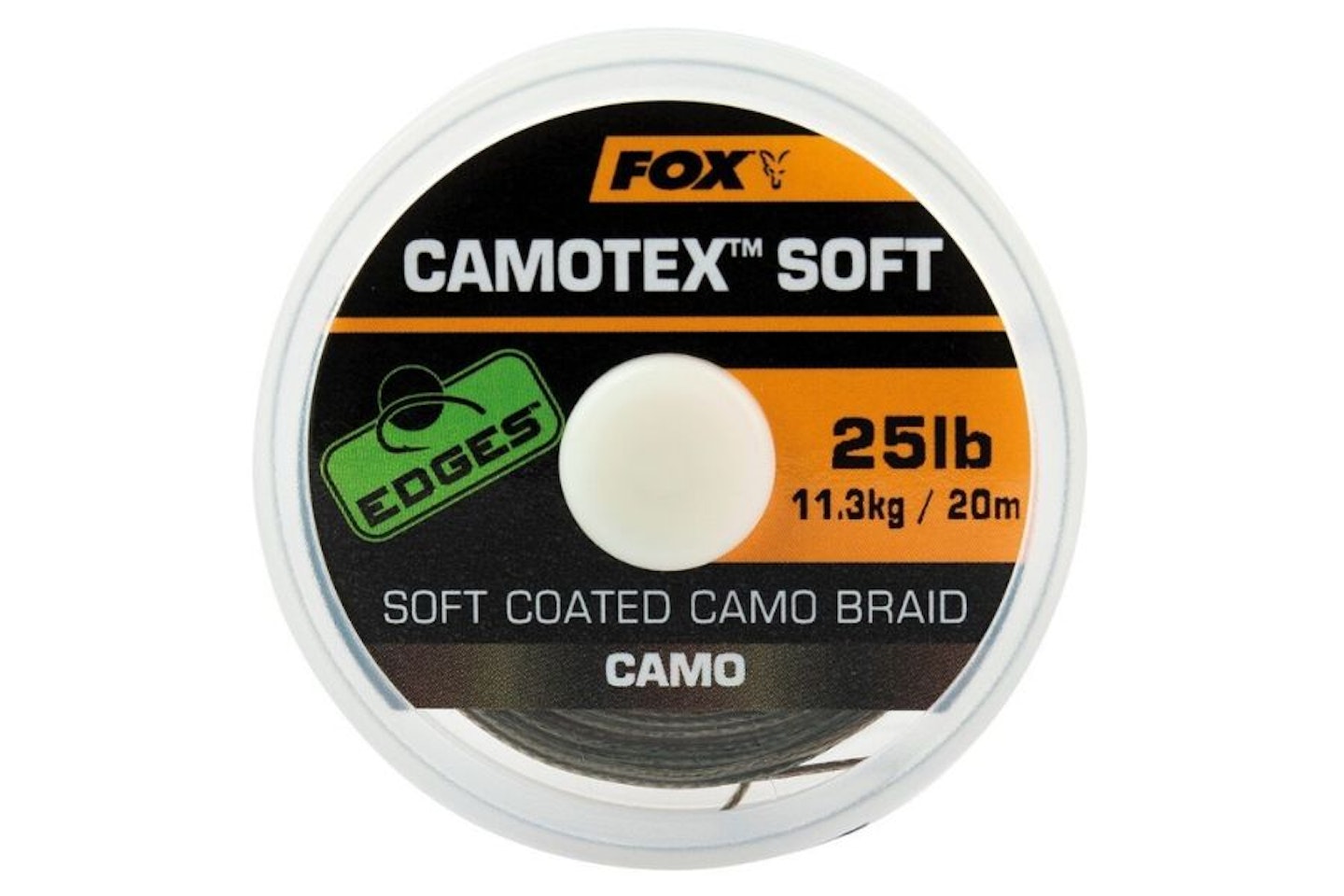
www.total-fishing-tackle.com
For excellent camouflage with your braided hooklengths, the Fox Camotex Soft is hard to beat. Finished in a matte camo color, it subtly blends into a variety of lakebeds, meaning you don’t need 20 different spools of hooklink material to make your rigs disappear on the substrate.
The outer coating is very supple, making the hooklink extremely versatile and suitable for most fishing situations, whether you're dealing with soft silt, fishing in weed, or on gravel. It excels in creating bottom bait rigs and boom sections for popular pop-up rigs like the Ronnie.
Available in 20lb, 25lb, and 35lb breaking strains on a 20m spool
Pros
- Supple nature makes it really versatile
- Great camo finish blends in well with a variety of lakebeds
Cons
- Not the best choice when fishing on really clean gravel
Best low memory hooklink
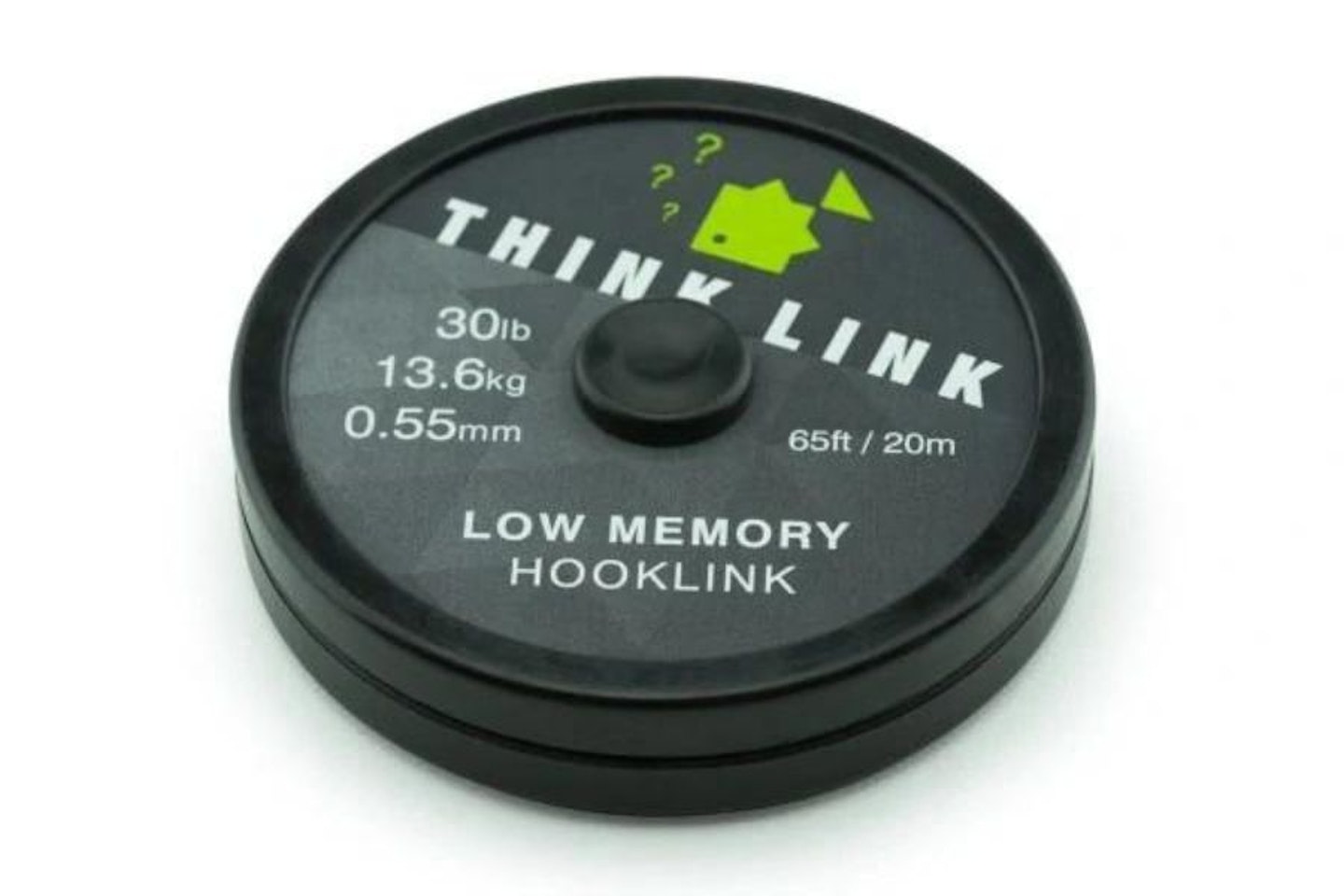
www.total-fishing-tackle.com
Thinking Anglers Think Link is an incredibly strong material that is ideal for rigs such as the D-Rig, where a stiffer hooklink is needed to help kick the rig away from the lead. Made from a type of monofilament, it has very low memory, which allows it to be steamed straight easily and remain that way. It is excellent for creating boom sections and can be crimped if that’s your preferred method of securing your rigs.
The high knot strength ensures that Think Link won’t let you down, making it a great choice when fishing for large fish or in snaggy or weedy situations. The clear nature of the product means it disappears on any lakebed, while its slightly supple nature still offers movement that you wouldn’t expect from a stiffer material.
Think Link is available on a 20m roll in 25lb and 30lb breaking strains; however, it breaks well above the stated strength.
Pros
- Can be straightened really easily
- Incredibly strong when knotted or crimped
Cons
- A little stiff for soft or weedy lakebeds
Best hooklink for concealment

www.total-fishing-tackle.com
For the ultimate underwater concealment, you’ll be hard-pressed to find anything better than the ESP Soft Ghost Fluorocarbon. With nearly identical refraction properties to water, this 100% fluorocarbon material practically disappears when submerged, making it unbeatable for targeting wary fish.
Because fluorocarbon is denser than water, it sinks to the lakebed effectively, keeping it out of the way of feeding fish and helping to position your rig precisely where you want it. The ESP Soft Ghost has slightly more stretch than other fluorocarbons on the market, providing extra shock absorption, making it very strong for its diameter whilst helping reduce hook pulls. Additionally, it is softer and more supple, making it a more user-friendly material.
Available in 10lb, 12lb, 15lb, and 18lb on 20m spools.
Pros
- Ultimate underwater concealment
- Sinks well to help pin the rig down
Cons
- Can kink so wet your knots, they can be steamed out easily though
Best coated hooklink for abrasion resistance
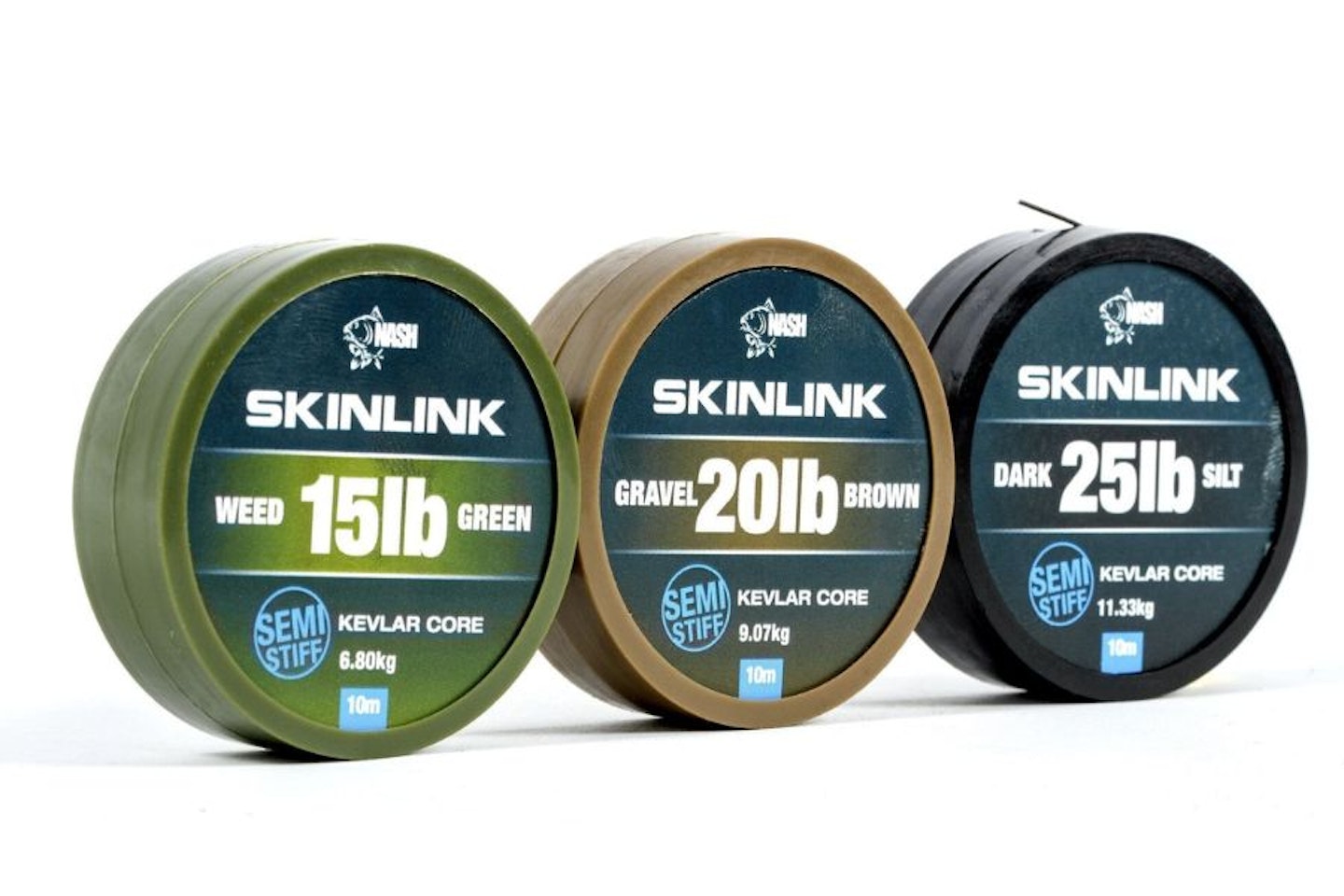
www.total-fishing-tackle.com
When strength is required, the Nash SkinLink is one of the best choices currently available on the market. The inner braid is made from industry-unique Kevlar fibers, the same material used in stab-proof vests, making it incredibly abrasion-resistant. If you encounter situations such as snags, sharp gravel bars, or mussel beds, you can be confident that this material has the strength needed to safely land fish without the rig parting too easily.
Thanks to the Kevlar fibers, SkinLink is also quite heavy, so it sinks well, reducing the amount of putty needed to keep it pinned down—ideal if crayfish are present. The semi-stiff nature ensures that the rig always resets if disturbed while in the lake.
Available in Gravel, Weed, and Silt colors, and in 15lb, 20lb, 25lb, and 35lb breaking strains, there is sure to be a braid in the range to suit your needs.
Pros
- Kevlar fibres make it incredibly abrasion resistant
- Semi stiff outer coating helps reset the rig
Cons
- There is not soft version in the range
Best hooklink material for chod rigs

www.fishingtackleandbait.co.uk
When using chod or hinged-stiff rigs, you'll need a specialist material, and the Korda Mouth Trap has been specifically designed for such rigs. This very stiff filament material has high memory, allowing you to introduce a curve using just your hands—no need to steam it to achieve that perfect angle for your rig.
The stiffness of the material makes it challenging for fish to manage once they inhale the bait. The crucial curve you introduce into the chod section ensures that the hook is positioned perfectly to grab hold. Mouth Trap is also incredibly tough, ensuring it won’t break, which is particularly important when using a short hook length as with a chod rig.
Available on a 20m roll in breaking strains of 15lb, 20lb, and 25lb.
Pros
- Very stiff with a high memory
- The perfect hooklink material for chod rigs
Cons
- The higher diameters can be difficult to get through smaller hook sizes three times
Best hooklink material for zig fishing
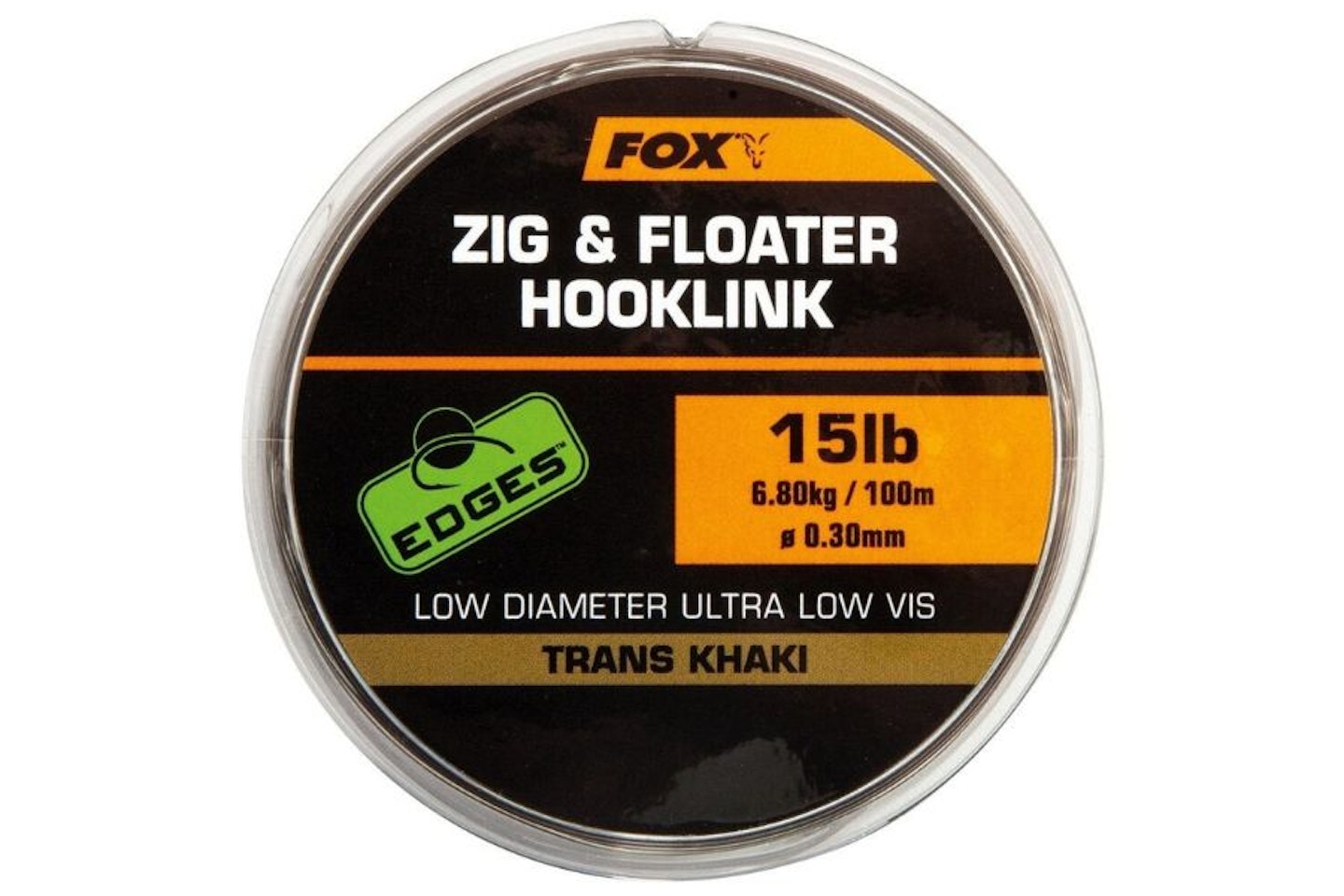
www.total-fishing-tackle.com
The Fox Zig and Floater hooklink is ideal for suspending a bait off the bottom or fishing on the surface. Its neutral buoyancy helps prevent it from sinking, which could otherwise drag your hookbait out of position.
The Trans Khaki finish on the monofilament makes it very hard to see underwater, reducing suspicion from fish, especially important when using long hook lengths for zig and floater fishing. The line benefits from a low diameter relative to its breaking strain, enhancing concealment, while its ultra-smooth profile helps reduce twist and tangles.
Available in 10lb, 12lb, and 15lb on a 100m spool, you’ll have plenty of line to tie up rigs for any depth.
Pros
- Neutral buoyancy is great for suspending baits
- Trans Khaki colouration helps with concealment
Cons
- The lighter 10lb is prone to twisting up so use a quality swivel
Best hooklink material for solid bags
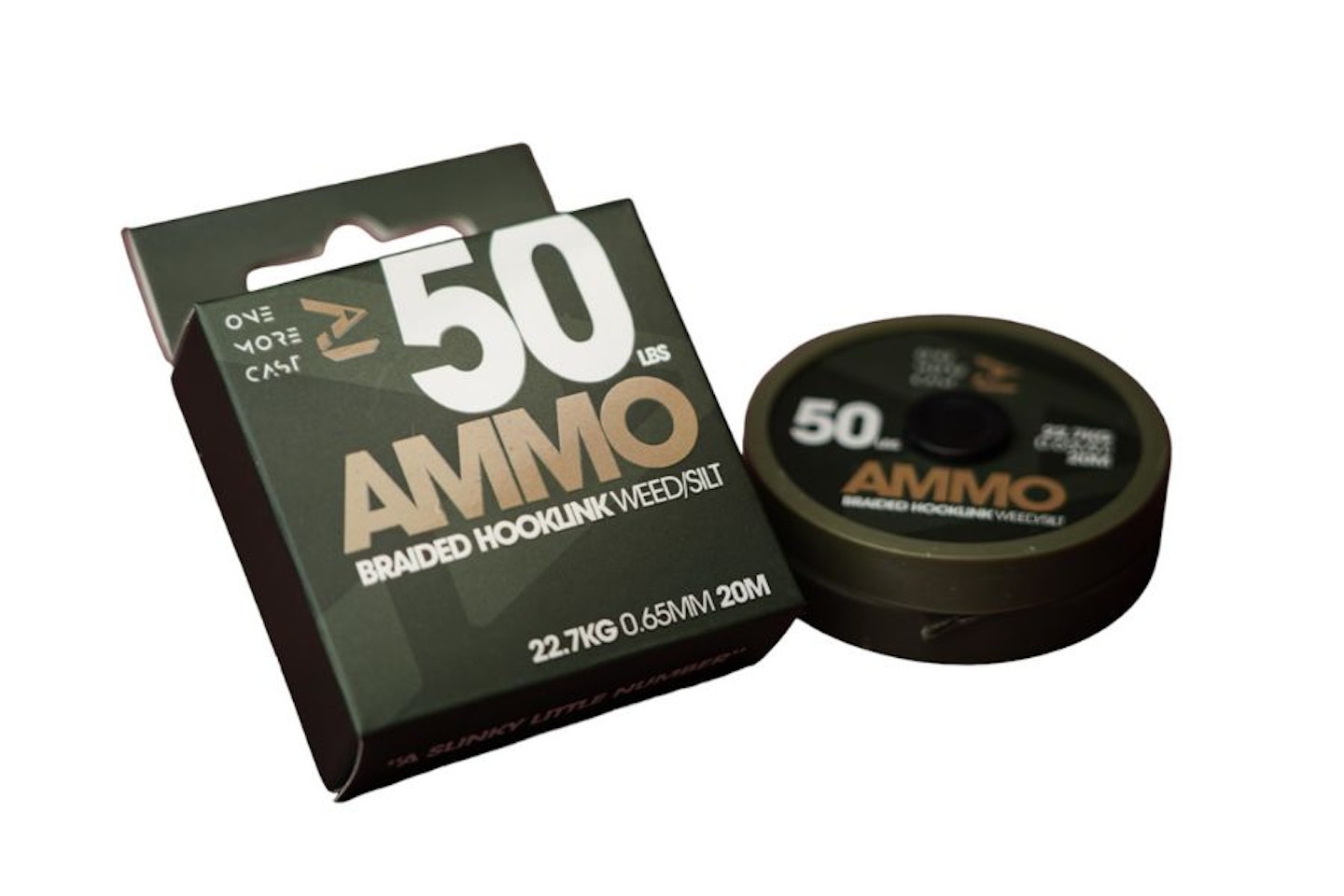
www.ebay.co.uk
The OMC AMMO Braided Hooklink is ideal if you need a super-supple braided material for fishing solid bags or if you want the maximum amount of movement in your rig. Thanks to its tightly woven fibers, the material doesn’t fray easily and offers excellent anti-tangle properties, even as an uncoated braid, making it suitable for use as a boom section to give the carp something different to deal with.
The camouflage finish on the braid blends well with a variety of lakebeds, and it is incredibly strong and durable. This makes it perfect for rigs like a slip D or combi, where you want to change the hook without frequently replacing the hooklink. The rounded, slightly thicker diameter also helps prevent unnecessary damage that thinner braids can sometimes cause, which is a great advantage.
Available in two colors—Gravel/Clay and Weed/Silt—with 25lb and 50lb breaking strains on a 20m spool.
Pros
- Very supple, perfect for solid bag rigs
- Really strong material
Cons
- Is prone to tangling due to its supple nature
Best budget coated braid hooklink
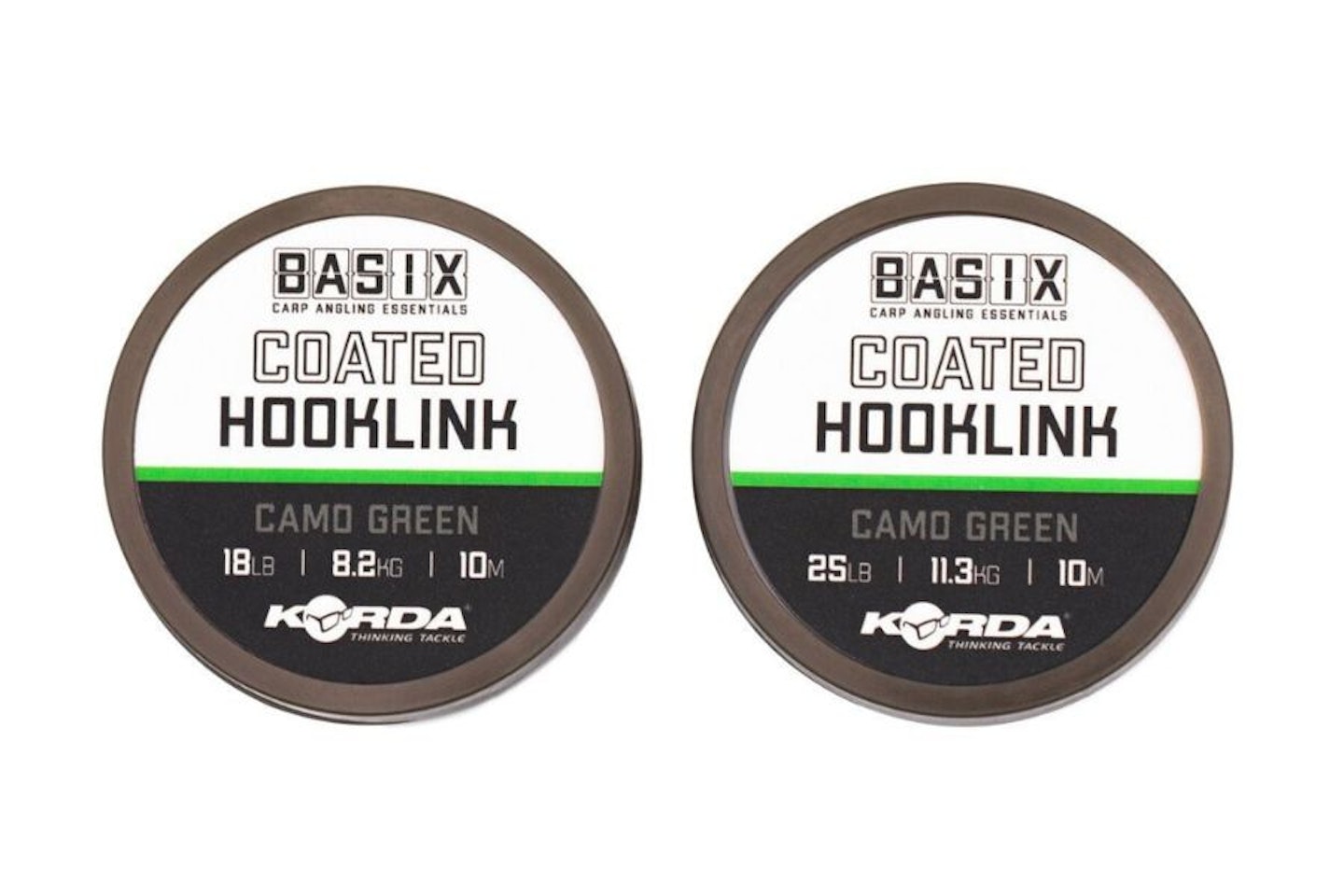
www.total-fishing-tackle.com
If you’re new to carp fishing or on a budget, the Korda Basix Coated Hooklink is an excellent choice. It offers high-quality material at a fraction of the cost compared to other coated braids on the market.
The outer coating is between soft and semi-stiff, making it ideal for almost any situation and rig, thus simplifying your choice of hooklink material. The material straightens out well without the need for steaming, is very strong, and strips easily if you want to adjust the presentation. It also blends in effectively with the lakebed.
Available in Camo Green in 18lb and 25lb breaking strains on a 10m roll.
Pros
- Great for beginners
- Really versatile
Cons
- Only available in 10m spools
Best tungsten loaded hooklink
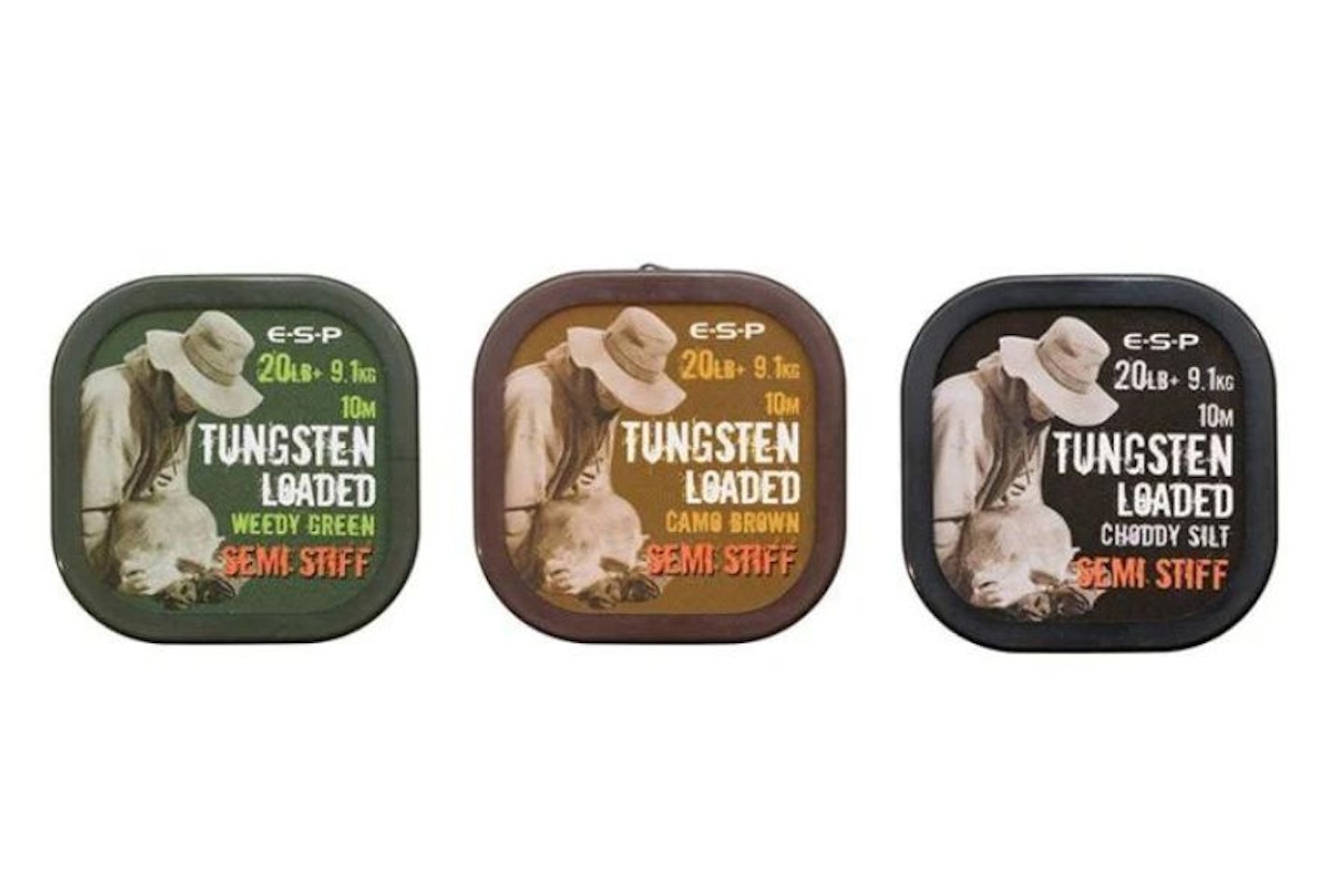
www.total-fishing-tackle.com
Keeping the hooklink pinned to the lakebed is crucial when fishing on the bottom, and the ESP Tungsten Loaded Coated Braid excels in this regard. Thanks to the use of tungsten in the manufacturing process, the hooklink is very heavy. Not only is the braid heavy, but it also performs exceptionally well. The Dyneema core is very supple, doesn’t fray easily, and the coating can be easily stripped back.
Tested and produced with input from renowned anglers like Terry Hearn, you can trust that this braid meets high standards. It is available in both soft and semi-stiff versions, with the semi-stiff option often favored by anglers for its slightly better performance, unless the bottom is very soft. The color scheme is unique, featuring flecks along its length to break up its appearance on the lakebed.
Available in a 20lb breaking strain with Gravel, Silt, and Weed colors on a 10m spool.
Pros
- Very heavy
- A fantastic, user friendly hooklink
Cons
- Only available in 20lb breaking strain, it is very strong however.
What to look for in a carp fishing hooklink
Due to the varying nature of lakebeds and the different hooklinks available on the market, the best carp fishing hooklinks are those that provide the desired presentation for the specific scenario you are facing. If a material causes the bait to act unnaturally, is highly visible, or anchors the bait away from where the carp can reach it, then it is unsuitable for that situation.
The best hooklinks will present the bait as naturally as possible while allowing the rig to perform efficiently to hook the carp. Since carp angling relies on the fish hooking itself, the components of the rig significantly impact your success rates. Generally, for softer, debris-filled lakebeds, a softer hooklink material is preferable. Conversely, for hard bottoms like gravel, a stiffer material usually performs better.
When choosing a hooklink material, first consider how you want the rig to perform. If you want the rig to kick away from the lead and reset itself when picked up, a stiffer hooklink is ideal. For fishing with a solid bag, you’ll need a very supple, braided hooklink that can be carefully coiled into the bag, allowing for free movement when the carp sucks up the bait.
Glossary
Hooklink: A term that refers to the line that the hook is attached to that is then attached to the mainline.
Braid: A line made up of strands of fibres like dyneema that are tightly wound to make one, strong fibre. The braid will give you an indication of how many strands it contains, generally the higher the count the stronger it is.
Coated braid: A braid that has a plastic outer coating on it, this is added to alter the properties and make it less prone to tangling.
Tungsten: A metal that is really heavy and is often added to putty or hooklinks improve their sinking properties.
Fluorocarbon: A fishing line that is made of a single strand of fluoropolymer, this material has a similar refractory index to water, making it almost invisible.
Refractive index: The refractive index is the measure of bending of a light ray when passing from one medium to another. The more similar they are the more indistinguishable they are.
Chod Rig: A chod rig is a pop up rig fished on a short hooklink straight off the mainline or lead core. It is primarily designed to be cast onto any lakebed and still present the bait well.
Breaking Strain: This is simply the amount of pressure required to break a fishing line, it doesn't refer to the size of the fish you can land on it.
Line Diameter: The diameter of the line gives an indication to how thick the line is in millimetres (mm), the higher the diameter the thicker the line.
<strong>Frequently asked questions</strong>
What is the best hooklink material for carp?
There is no one size fits all when it comes to hooklinks for carp fishing, all types of material excel when used in the right situation. As a rule softer braids and coated braids are better when fishing over soft lakebeds and weed, with stiffer hooklinks better when fishing on firm bottoms like gravel.
What is the best hooklink material for solid PVA bags?
The best material for using in conjunction with a solid bag is a standard, uncoated braid. The supple nature allows you to coil it easily into the compact area inside the bag, whilst making sure the hookbait remains inside the pile of free offerings when the bag melts. A stiffer hooklink could push it out or make it sit unnaturally resulting in less takes.
What breaking strain hooklink should I use when carp fishing?
If you're fishing on the bottom and the the hooklink is well camouflaged it doesn't really matter as the fish wont see it, so generally the stronger the better, with most anglers using around 20-30lb. If you are using zigs or fishing on the surface you need to consider how visible the material is you are using is, in this instance usually the lighter the hooklink you can safely use will get you more bites as the fish often inspect the baits longer when they are floating or suspended.
What is the difference between a coated braid and an uncoated braid hooklink?
Apart from the obvious one being coated and one not, there are very discernible differences between the two. Coated braids tend to be far more versatile, they can be stripped back to reveal the soft inner whilst still retaining their stiffer properties. They tend to tangle far less, can be used for a variety of different rigs and boom sections and come in a whole host of colours. An uncoated braid is prone to tangling but does offer unrivalled movement when a carp inhales the hookbait due to its very supple nature, making it great in a solid PVA bag or when dropped in the margins.
Author Aidan Bordiuk is an enthusiastic angler who enjoys all fishing disciplines from match fishing to beach casting. He is currently occupying the position of Commercial Content Writer at Angling Times.
